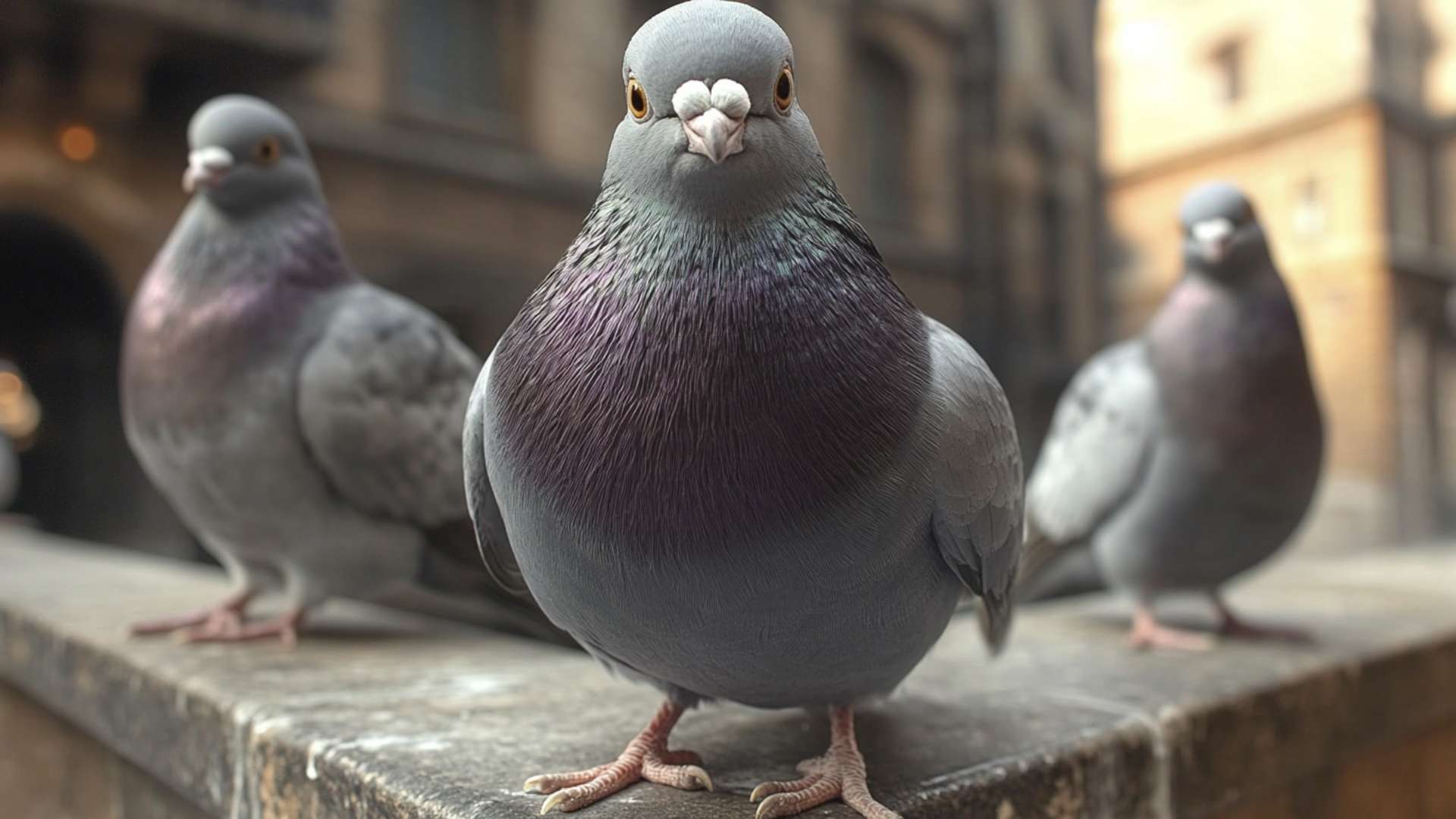Pigeons, those feathered creatures we often spot perched on city buildings or pecking at crumbs in the park, are more than just urban dwellers. They are fascinating creatures with a unique reproductive cycle that is worth exploring. Understanding pigeon eggs is not only a matter of curiosity but also sheds light on the intricacies of their species.
Pigeons, scientifically known as Columba livia, are monogamous birds that form strong pair bonds for life. They build their nests in various locations, including trees, cliffs, and even abandoned buildings.
These nests are made from materials such as twigs, straw, and any other available debris they can find. The female pigeon lays her eggs in this new nest while the male pigeon assists by finding supplies and offering protection.
Brief overview of pigeons’ reproductive cycle
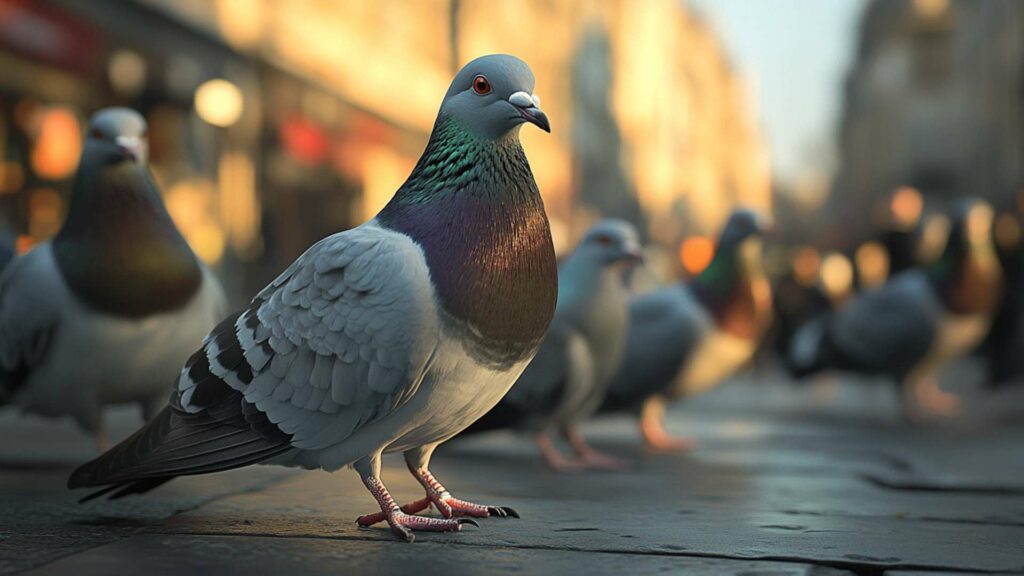
The reproductive cycle of pigeons follows a similar pattern to other birds. When it’s breeding season (which can vary depending on the climate), male pigeons engage in courtship displays to attract a mate.
These displays often involve puffing up their chests, cooing melodiously, and strutting around to catch the female pigeon’s attention. Once the baby pigeon is attracted and impressed by these charming behaviors (who wouldn’t be?), the female pigeon lays one or two eggs.
Unlike many other bird species where clutches usually consist of multiple eggs (think chickens with their dozen eggs!), pigeons tend to have smaller clutches with only one or two eggs per nest. This might be surprising considering pigeons’ abundance in urban areas worldwide.
Importance of understanding pigeon eggs

Understanding what pigeon eggs look like holds significance beyond mere curiosity about these avian reproductive marvels. Pigeon populations can sometimes become an issue due to their ability to adapt well to urban environments and reproduce rapidly if left unchecked. By understanding their eggs, we can gain insights into their reproductive success and potentially help control their population growth if necessary.
Furthermore, studying pigeon eggs contributes to our understanding of avian reproduction as a whole. By comparing the characteristics of pigeon eggs to those of other bird species, scientists can gather valuable data about the similarities and differences in egg morphology and composition.
This knowledge aids in broader conservation efforts and helps protect the diversity of bird species worldwide. So, let’s dive into the details of what pigeon eggs actually look like – from their size and coloration to their shell composition and incubation period – as we unravel the fascinating world of these resilient urban dwellers’ reproductive journey.
General Characteristics of Pigeon Eggs
Pigeon eggs may not be as widely recognized as their chicken counterparts, but they possess their own unique charm. When compared to the more familiar chicken eggs, pigeon eggs are slightly smaller in size but still substantial.
They have an elongated shape, similar to a teardrop, with one end pointed while the other is rounder. This distinctive shape allows them to fit snugly into the nests that pigeons build.
Comparison to Chicken Eggs
If you’ve ever held a chicken egg in your hand, you might notice that pigeon eggs tend to be a little smaller overall. On average, pigeon eggs measure around 4 centimeters (1.5 inches) in length and 2.5 centimeters (1 inch) in width.
In contrast to dove eggs, chicken eggs are typically about twice the size of pigeon eggs. However, don’t let their smaller stature fool you; pigeon eggs still contain all the necessary nutrients and protective elements required for the development of young squabs.
Coloration and Patterns
One of the intriguing aspects of pigeon eggs is their coloration and patterns. While most people associate bird eggs with shades of egg white or brown, pigeon eggs present a delightful range of colors.
The base color of these little treasures can vary from pure white to creamy hues or even pale blue tones that resemble a serene sky on a sunny day. But what makes each egg distinctively beautiful are the occasional speckles or blotches adorning its surface.
These markings can appear as subtle flecks scattered across the shell or more prominent spots concentrated at either end. These unique patterns add character to each individual egg and make it easier for parent pigeons to identify their own offspring amidst multiple broods within a shared nest site.
Overall, these general characteristics give pigeon eggs their own identity and highlight the wonders of avian diversity. From their slightly elongated shape to their varying coloration and intriguing patterns, pigeon eggs are a testament to the extraordinary beauty found in nature’s creations.
Eggshell Composition and Structure
When it comes to the composition of pigeon eggs, one crucial element stands out: calcium carbonate. This mineral compound serves as the building block for the eggshell, providing necessary strength and protection to the growing embryo inside the fake egg.
Pigeons, like many bird species, depend on calcium-rich diets to ensure healthy egg formation. As columba livia, or common pigeons, mate for life and have a strong sense of parental care, their bodies prioritize producing robust shells that can withstand potential threats.
Similarities to Other Bird Eggs: Nature’s Common Thread
While pigeon eggs may possess distinct characteristics in terms of size and coloration, their fundamental structure bears a striking resemblance to other bird eggs. The utilization of calcium carbonate as a primary component is a shared trait among avian species. Whether it’s a chicken egg or a pigeon egg, this remarkable similarity highlights the evolutionary importance of an efficient protective mechanism for avian offspring.
Shell Thickness and Porosity: Balancing Act for Incubation
Pigeon eggs exhibit a delicate balance between shell thickness and porosity, essential during incubation. The shell’s thickness must be sturdy enough to protect the developing embryo but also porous enough to allow gas exchange between the egg’s warm inner environment and its surroundings.
Through tiny pores scattered across the surface of the shell, oxygen enters while carbon dioxide exits during incubation. This clever adaptation ensures that pigeon squabs receive sufficient oxygen while eliminating metabolic waste products.
However, this intricate porosity leaves pigeon eggs vulnerable to external factors such as microbial intrusion or dehydration if environmental conditions are unfavorable. Parental pigeons diligently guard their nests against potential threats by utilizing materials like straw or even fake eggs (sometimes used as decoys) to maximize protection while maintaining optimal conditions for their young.
Overall, understanding the composition and structure of pigeon eggs sheds light on the marvels of avian reproduction. From the crucial role played by calcium carbonate in building sturdy shells to the balance between thickness and porosity for successful incubation, these intricate details unveil the remarkable adaptations that allow pigeons to bring new life into the world.
Incubation Period and Parental Care
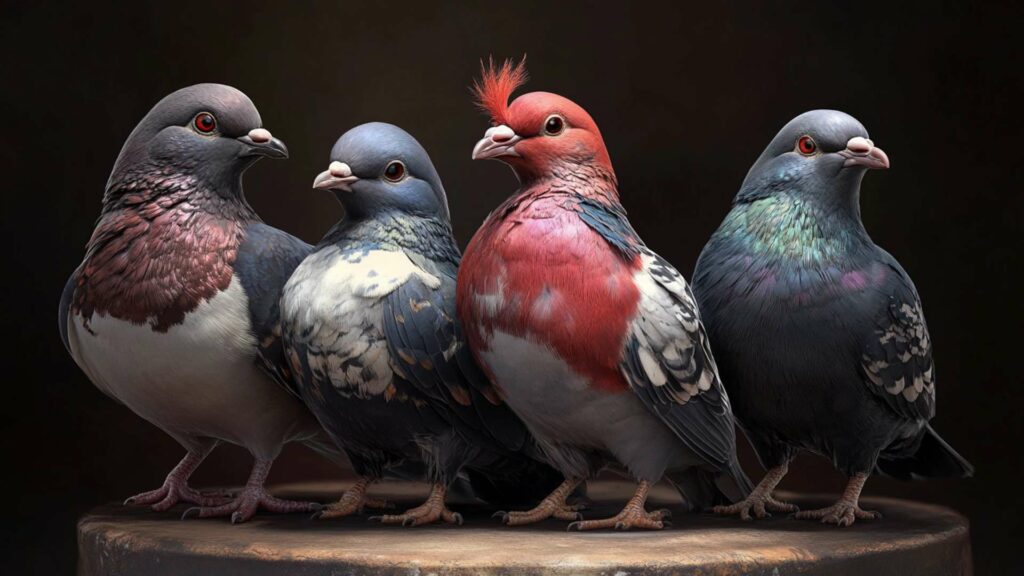
During the incubation period, which typically lasts between 17 to 19 days, the parent pigeons take turns sitting on the eggs to keep them warm. This duration of incubation can be affected by various environmental factors such as temperature and humidity.
Warmer temperatures tend to accelerate the development process, leading to a shorter incubation period, while cooler temperatures can delay hatching. Pigeon eggs are known for their ability to withstand slight fluctuations in temperature without harming the unhatched chicks.
The surrounding environment plays a significant role in determining the hatching time of pigeon eggs. Pigeons, being adaptable creatures, can adjust their incubation behavior based on external conditions.
For instance, if they sense that it might take longer for the first egg of the eggs to hatch due to unfavorable weather or food scarcity, they may prolong their incubation period slightly. On the other hand, in favorable conditions where there is an abundance of food and a suitable nest site within reach—such as ledges on tall buildings—the parents may expedite the hatching process.
Comparison to other bird species
When compared to some other bird species, the duration of pigeon egg incubation is relatively short. Chicken eggs typically require an incubation period ranging from 20 to 23 days before they hatch into fluffy yellow chicks. In contrast, young pigeons emerge from their shells sooner due to their smaller size and faster development rate.
Parental roles during incubations
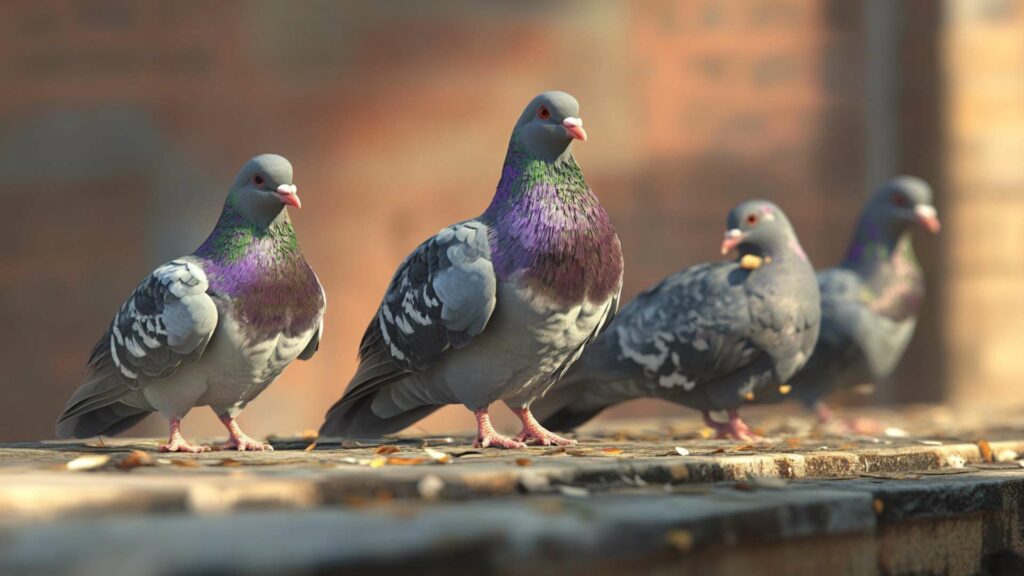
Pigeon pairs exhibit remarkable cooperation during egg incubation. Both male and female pigeons take turns sitting on the eggs throughout the day and night until they hatch successfully.
The shifts often last for several hours, with each partner relieving the second egg of the other when it’s time to rest or find food. This shared responsibility ensures that the eggs receive consistent warmth and care.
Pigeons are known for their nurturing behavior towards their young. During incubation, parents maintain a constant vigil over the eggs to protect them from potential predators and regulate their temperature. Additionally, pigeons produce a specialized secretion called “pigeon milk” in their crop, which provides essential nutrients to the baby pigeons after they hatch.
The parents regurgitate this nutritious substance and feed it directly to their chicks until they are old enough to consume solid food. Pigeon parental care extends beyond incubation as well.
Once the chicks hatch, both parents actively participate in feeding them by regurgitating partially digested food into their beaks. This provision of nourishment continues until the chicks are capable of eating independently.
Throughout this entire process, mutual affection and cooperation between the female sits the pigeon pair play a crucial role in ensuring the successful development and growth of their offspring. Remember to always appreciate these magnificent birds and marvel at the dedication they display during this vital stage of life.
Uncommon Facts about Pigeon Eggs
Pigeons have an interesting reproductive behavior when it comes to egg-laying. Unlike some bird species that lay eggs once a year, pigeons can lay eggs multiple times within a breeding season.
Female pigeons are known to be prolific egg layers, with some individuals laying up to eight or more eggs in a single season. This frequent egg-laying is due to their ability to breed throughout the year, especially in urban areas with abundant food sources and suitable nesting locations, such as abandoned buildings.
Frequency of egg-laying in a breeding season
The frequency of egg-laying in pigeons varies depending on various factors, including environmental conditions and availability of resources. In optimal conditions, female pigeons can lay a new clutch of eggs every month or so during the breeding season.
However, it’s important to note that not all eggs laid by female pigeons will successfully hatch into healthy chicks. Factors such as predation or poor nesting conditions may lead to some eggs being abandoned or non-viable.
Potential for double-yolked eggs
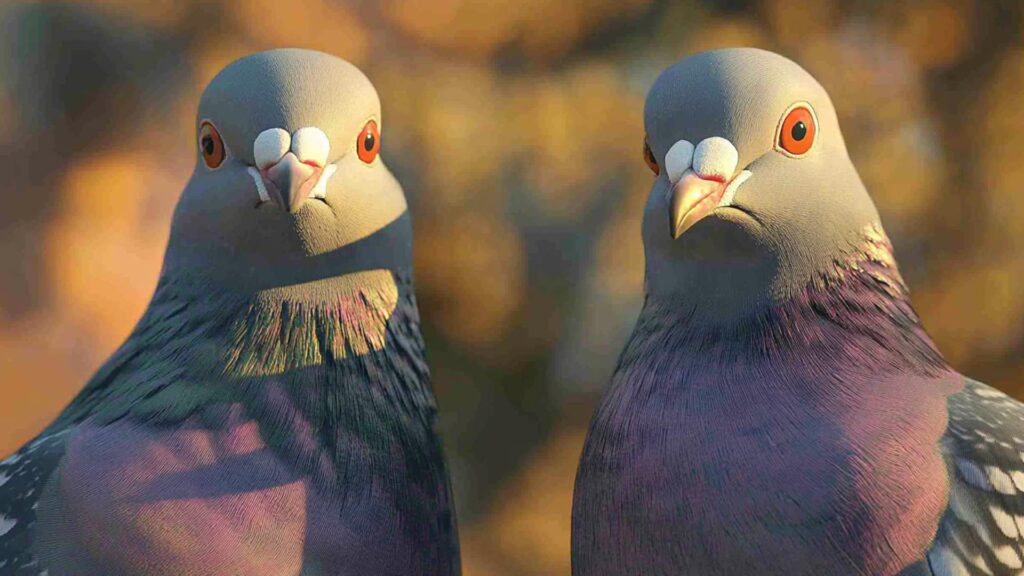
Double-yolked pigeon eggs are relatively uncommon but not unheard of. These unique occurrences happen when two yolks are released by the female pigeon’s ovary and both become fertilized during mating.
As a result, one egg shell often encloses two separate yolks and embryos, which can sometimes lead to the development of twin pigeon squabs (baby pigeons). Double-yolked eggs tend to be larger than regular pigeon eggs due to the presence of two yolks within them.
Egg cannibalism
Egg cannibalism is an unusual behavior observed among some pigeon pairs during their breeding cycle. In this behavior, one or both parents may intentionally break and consume their own eggs.
While this may seem counterproductive, it is thought to be a result of various factors such as nutritional deficiencies, stress, or inexperience of the breeding pair. Egg cannibalism is relatively rare among pigeons and is not observed as commonly as in other bird species.
Causes and potential implications
The exact causes of egg cannibalism in pigeons are not fully understood. However, it may be triggered by a lack of certain nutrients like calcium or protein, which are essential for healthy egg development.
In some cases, stress caused by disturbances from other pigeons or external factors can also contribute to this behavior. Egg cannibalism can have potential implications on the reproductive success of pigeon pairs since it leads to the loss of potential offspring.
Further research is needed to better understand the underlying causes and consequences of this intriguing phenomenon. Understanding uncommon facts about pigeon eggs provides valuable insights into their reproductive habits and behaviors.
Pigeons’ frequent egg-laying capabilities during the breeding season allow them to raise multiple broods each year. The occurrence of double-yolked eggs adds an interesting twist to their reproductive journey.
Although rare, egg cannibalism among pigeons highlights how various factors can influence their parental instincts and impact breeding success. Exploring these uncommon aspects enhances our appreciation for these social birds that thrive in both urban and natural environments.
Predators and Threats to Pigeon Eggs
Pigeon eggs, like many eggs or other bird eggs, face a range of threats from natural predators in the wild. Among the most common culprits are rats and snakes.
Rats are notorious for their ability to infiltrate nests and steal eggs as a source of food. With their sharp teeth and nimble bodies, they can easily climb trees or buildings to reach pigeon nests hidden away from prying eyes.
Snakes, on the other hand, pose a different kind of danger for pigeon eggs. These stealthy reptiles can slither their way into nests undetected, coiling around the precious eggs and devouring them whole.
Examples: rats, snakes
Rats are opportunistic creatures that will readily take advantage of any food source they find in their surroundings and eat it – including pigeon eggs. Their constant gnawing instinct drives them to seek out vulnerable nests, where they can feast on the protein-rich contents within those delicate shells. This poses a significant threat to pigeon populations as female pigeons invest valuable time and energy into laying each egg.
Similarly, snakes exhibit cunning hunting tactics that enable them to stealthily prey upon unsuspecting pigeons and their eggs. They employ their remarkable ability to squeeze through tight spaces to access pigeon nests tucked away in crevices or hollows.
Once inside the common pigeon nest, these reptilian hunters strike swiftly, consuming not only the defenseless pigeon eggs but also potentially causing harm to adult pigeons if they are present during an attack. Considering these natural predators’ relentless pursuit of pigeon eggs as a vital food source for themselves or their offspring ensures that successful nesting requires vigilance from both male and female pigeons throughout incubation.
Conclusion
While it is disheartening to acknowledge the threats faced by pigeon eggs from natural predators like rats and snakes, it is important to remember that pigeons, as a species, have adapted remarkably well in urban environments alongside humans. Pigeons are resilient and resourceful creatures, capable of finding alternative nesting sites that provide greater protection against these predators. By understanding the challenges faced by pigeon eggs in the wild, we can appreciate the remarkable efforts made by pigeon parents to safeguard their offspring.
Despite these risks, pigeons continue to thrive in diverse habitats across the globe. So let us marvel at the beauty of pigeon eggs and respect the resilience of these remarkable birds as they continue their journey of parenthood.
Keep Pigeons Away with D-Termination: Las Vegas’ Top Pest Control Solution!

If you’re facing pigeon-related challenges, D-Termination is the answer. Our experienced team specializes in deterring pigeons and restoring cleanliness and order to your space. Bid farewell to pigeons – select D-Termination for highly effective pest control today!
Get in touch with us at 702-919-6310 or visit dtermination.com to schedule your pigeon control service and regain control of your space from these unwelcome pests.
Frequently Asked Questions:
Pigeon eggs are typically white.
Pigeon eggs are about the size of a small marble.
Pigeons often lay eggs in the spring and summer.
If you find a pigeon egg, it’s best to leave it undisturbed unless you are certain it’s abandoned or in danger.

